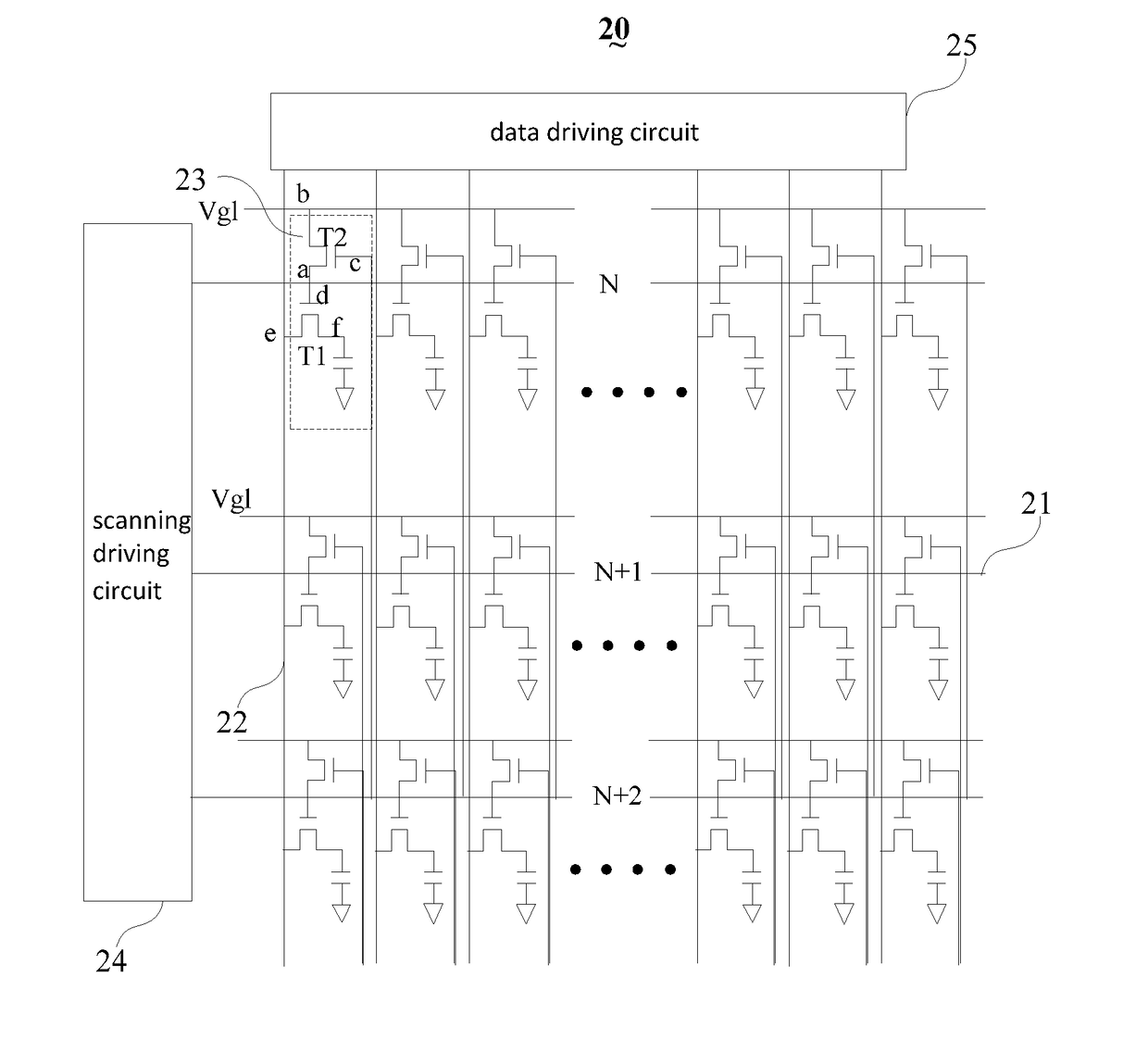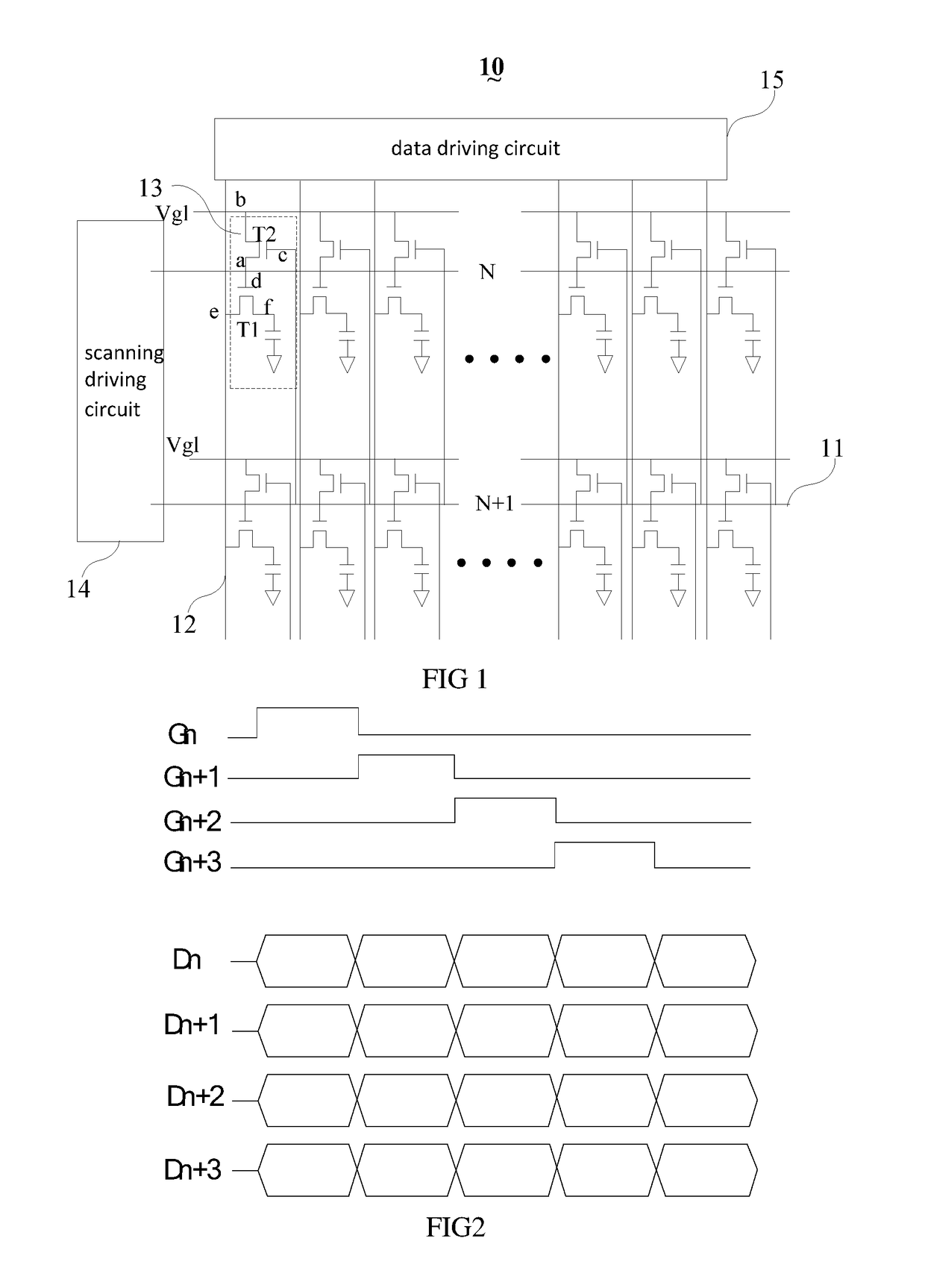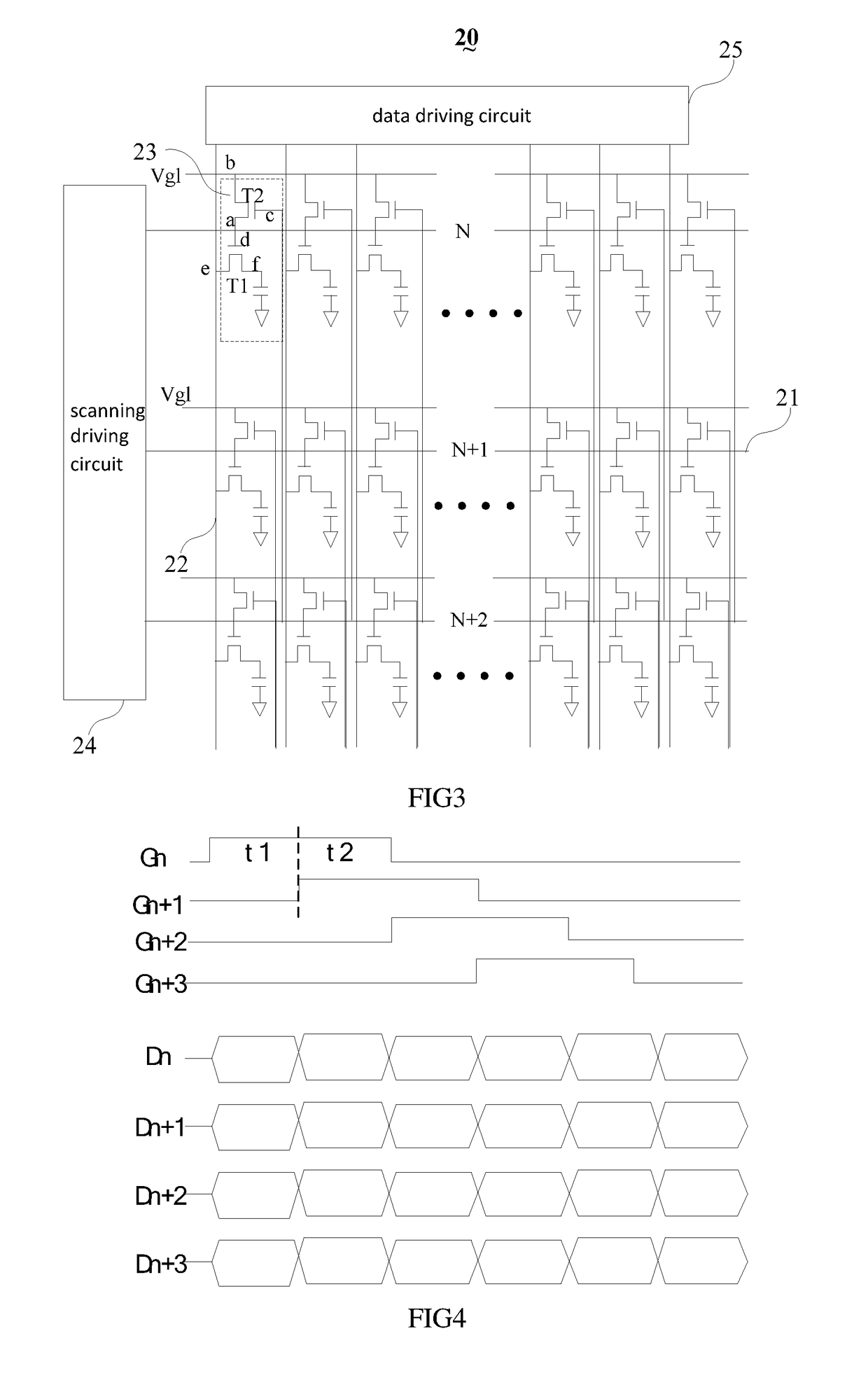Array substrates and display panels
a display panel and substrate technology, applied in non-linear optics, instruments, optics, etc., can solve the problems of low charging rate of lcds, inability to meet the requirements of high resolution and large dimension, etc., to enhance the charging rate of pixel, enhance the display performance of lcd, and reduce the risk of erroneous charging
- Summary
- Abstract
- Description
- Claims
- Application Information
AI Technical Summary
Benefits of technology
Problems solved by technology
Method used
Image
Examples
first embodiment
[0031]FIG. 1 is a schematic view of the array substrate in accordance with the present disclosure.
[0032]The array substrate 10 includes a plurality of scanning lines 11, a plurality of data lines 12, and at least one low voltage line (Vg1), wherein the scanning lines 11 and the data lines 12 intersect with other to form a plurality of pixel cells 13.
[0033]Each of the pixel cells 13 includes a first transistor (T1) for controlling a voltage of the pixel electrode within the array substrate 10. The at least one pixel cells 13 further includes a second transistor (T2) including a first end (a), a second end (b), and a control end (c), wherein the first end (a) connects to the control end (c) of the first transistor (T1), the control end (c) connects to the succeeding scanning line. The succeeding scanning line is turned on after the scanning line at a current level, which corresponds to the pixel cell 13 where the second transistor (T2) is located, is turned on. The second end (b) conn...
second embodiment
[0043]FIG. 4 is a schematic view showing timing sequence in accordance with the present disclosure. Also referring to FIG. 2, the pixel cell 23 at the N-th level is taken as one example. A falling edge of the scanning signals of the scanning line at the current level correspond to a rising edge of the scanning signals of the scanning line at the (N+2)-th level.
[0044]When a period of the rising edge of the scanning signals of the scanning lines 21 is too long, usually, a pre-charge driving method is adopted to charge the pixel circuit structure. With respect to the pre-charge driving method, before the scanning line at the current level is driven to find the address, the scanning driving circuit 24 provides the high potential to the scanning line at the current level to turn on the first transistor (T1) so as to conduct the pre-charge process to the pixel at the current level. As shown in FIG. 4, the half early period (t1) defined by the dashed line relates to the pre-charge period, ...
third embodiment
[0055]The control end of the second transistor (T2) of the pixel cell at the N-th level connects to the scanning line of the pixel cell at the (N+1)-th level. The succeeding scanning line in the third embodiment and the scanning line of the pixel cell at the N-th level are separated by the scanning line configured at least one level. The number of the scanning lines being arranged between the succeeding scanning line and the scanning line at the current level equals to a ratio of the pre-charging period to the normal charging period of the pixel cell where the second transistor (T2) is located. In the embodiment, the control end of the second transistor (T2) of the pixel cell at the N-th level connects to the scanning line of the pixel cell at the (N+2)-th level.
[0056]In FIG. 6, the array substrate 40 includes a plurality of scanning lines 41, a plurality of data lines 42, and at least one low voltage line (Vg1), wherein the scanning lines 41 and the data lines 42 intersect with oth...
PUM
| Property | Measurement | Unit |
|---|---|---|
| voltage | aaaaa | aaaaa |
| current level | aaaaa | aaaaa |
| color | aaaaa | aaaaa |
Abstract
Description
Claims
Application Information
 Login to View More
Login to View More - R&D
- Intellectual Property
- Life Sciences
- Materials
- Tech Scout
- Unparalleled Data Quality
- Higher Quality Content
- 60% Fewer Hallucinations
Browse by: Latest US Patents, China's latest patents, Technical Efficacy Thesaurus, Application Domain, Technology Topic, Popular Technical Reports.
© 2025 PatSnap. All rights reserved.Legal|Privacy policy|Modern Slavery Act Transparency Statement|Sitemap|About US| Contact US: help@patsnap.com



